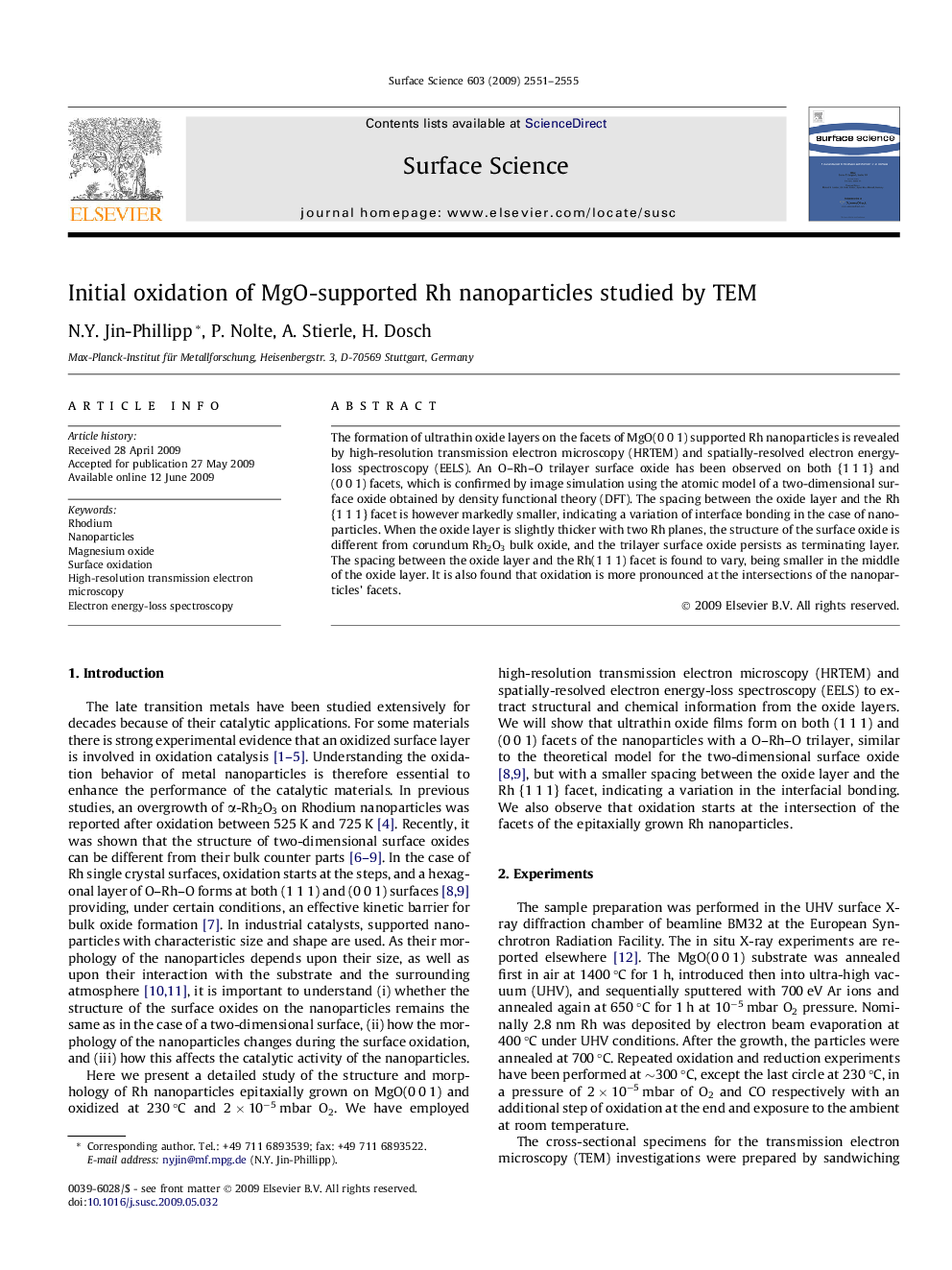| Article ID | Journal | Published Year | Pages | File Type |
|---|---|---|---|---|
| 5423783 | Surface Science | 2009 | 5 Pages |
Abstract
The formation of ultrathin oxide layers on the facets of MgO(0Â 0Â 1) supported Rh nanoparticles is revealed by high-resolution transmission electron microscopy (HRTEM) and spatially-resolved electron energy-loss spectroscopy (EELS). An O-Rh-O trilayer surface oxide has been observed on both {1Â 1Â 1} and (0Â 0Â 1) facets, which is confirmed by image simulation using the atomic model of a two-dimensional surface oxide obtained by density functional theory (DFT). The spacing between the oxide layer and the Rh {1Â 1Â 1} facet is however markedly smaller, indicating a variation of interface bonding in the case of nanoparticles. When the oxide layer is slightly thicker with two Rh planes, the structure of the surface oxide is different from corundum Rh2O3 bulk oxide, and the trilayer surface oxide persists as terminating layer. The spacing between the oxide layer and the Rh(1Â 1Â 1) facet is found to vary, being smaller in the middle of the oxide layer. It is also found that oxidation is more pronounced at the intersections of the nanoparticles' facets.
Keywords
Related Topics
Physical Sciences and Engineering
Chemistry
Physical and Theoretical Chemistry
Authors
N.Y. Jin-Phillipp, P. Nolte, A. Stierle, H. Dosch,
